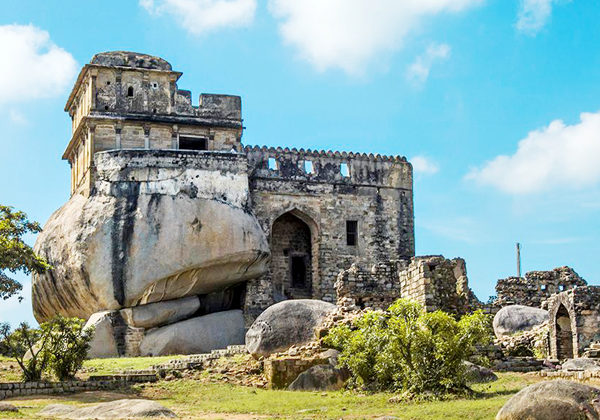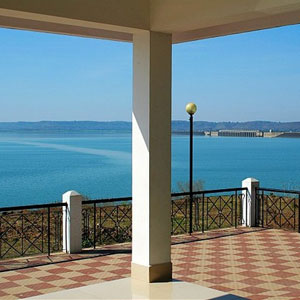Dhuandhar Falls : Close to the calm and scenic Bhedaghat, River Narmada becomes turbulent and plunges in the mighty waterfall known as Dhuandhar Falls. Water gushing forth from a higher plain gives it a smoke-like appearance and hence the name Dhuandhar, meaning a deluge of smoke. This waterfall, though it may seem mighty, falls from a height of just 9m. take the ropeway, in service from 10.30am to 6.30pm, for an aerial view.
Chausath Yogini Temple : At the confluence of Narmada and Bawanganga, a rock rises into a small circular hill. On top of this hillock is the beautiful Chausath Yogini Temple, which was built by the Kalchuri king Yuvrajdev I in the 10th century CE. This temple, which holds the shrine of Gauri Shankar in it, is the largest Yogini temple of India – Yoginis are the attendants of the Mother Goddess – and can be approached by climbing up 108 steps through a wooded hillside. It is dedicated to the 64 yoginis. An ASI board outside the temple indicates that there are a total of 81 images of different Brahmanical goddesses, though you may not be able to see all 81, as these sculptures often get sent away to various exhibitions.
The architecture of the temple is unique, with a circular plane 125 ft in diameter, and images from the Kushana and Gond periods in Kalchurian style. The temple also bears an inscription stating that the Queen Gosaldevi of Kalchuri Kingdom visited this temple daily.
Tripura Sundari Temple : Tripura Sundary Temple, another site of major religious significance, is at a distance of 12 km from Jabalpur city. Located in the village of Tewar, this temple is dedicated to the Tripura Sundari, a goddess patronized by the Kalchuri dynasty. It is believed that the rock shrine self-manifested by emerging from the ground, it has been a place of worship since the 11th century CE.
Bajnamath : Located 15 km away from Jabalpur is Bajnamath, one of the most sought-after tourist spots in the state. A fine blend of history and nature, Bajnamath is famous for its medieval structures, including a famous temple of Baba Bhairavnath. Constructed in the tantic tradition the Bajnamath Bhairav Mandir is located near a water body.
The Gond king Sangram Singh constructed the Sangram Lake, which lies close to Bajnamath. The lake is rich in avi fauna, and many migratory birds such as pin-tailed ducks, coots and red-perched pilchards are easily spotted here.


